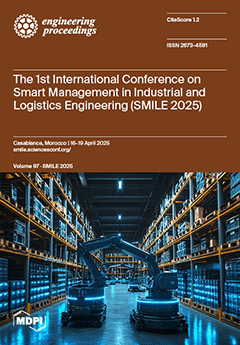Eng. Proc., 2025, SMILE 2025
The 1st International Conference on Smart Management in Industrial and Logistics Engineering (SMILE 2025)
Casablanca, Morocco | 16–19 April 2025
Volume Editors:
Mustapha Hlyal, ESITH, Morocco
Abdessamad Ait El-Cadi, Université Polytechnique Hauts-de-France, France
Kaoutar Kouzmi, ESITH, Morocco
Mariam Atwani, ESITH, Morocco
Kenza Izikki, ESITH, Morocco
- Issues are regarded as officially published after their release is announced to the table of contents alert mailing list.
- You may sign up for e-mail alerts to receive table of contents of newly released issues.
- PDF is the official format for papers published in both, html and pdf forms. To view the papers in pdf format, click on the "PDF Full-text" link, and use the free Adobe Reader to open them.




